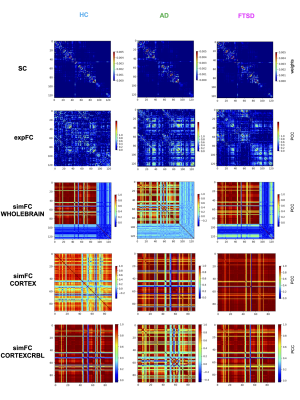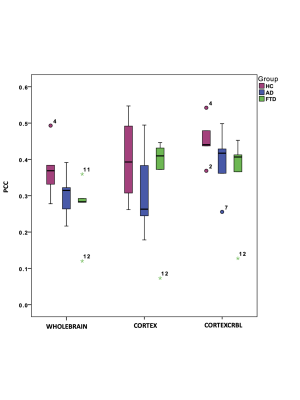Anita Monteverdi1,2, Fulvia Palesi1,2, Claudia AM Gandini Wheeler-Kingshott 1,2,3, and Egidio D'Angelo1,2
1Brain Connectivity Center Research Department, IRCCS Mondino Foundation, Pavia, Italy, 2Brain and Behavioral Sciences, University of Pavia, Pavia, Italy, 3NMR Research Unit, Queen Square MS Centre, Department of Neuroinflammation, UCL Queen Square Institute of Neurology, Faculty of Brain Sciences, UCL, London, United Kingdom
1Brain Connectivity Center Research Department, IRCCS Mondino Foundation, Pavia, Italy, 2Brain and Behavioral Sciences, University of Pavia, Pavia, Italy, 3NMR Research Unit, Queen Square MS Centre, Department of Neuroinflammation, UCL Queen Square Institute of Neurology, Faculty of Brain Sciences, UCL, London, United Kingdom
The integration of cerebro-cerebellar connections in The Virtual Brain increases its ability to predict subject-specific brain dynamics both in healthy and in pathological conditions, i.e. Alzheimer’s disease and Frontotemporal Spectrum Disorder.

Fig.1| The Virtual Brain (TVB) simulation was performed in three different conditions: healthy (HC), Alzheimer’s disease (AD) and Frontotemporal Spectrum Disorder (FTSD). For each group a randomly chosen subject is reported as an example. Each row shows structural connectivity (SC), experimental functional connectivity (expFC) and simulated functional connectivity (simFC) obtained with three different networks: whole-brain, cortical subnetwork (CORTEX) and embedded cerebro-cerebellar subnetwork (CORTEXCRBL).

Fig.2| Boxplot of Pearson correlation coefficient (PCC) between experimental and simulated functional connectivity for all groups (healthy, HC Alzheimer’s disease, AD Frontotemporal Spectrum Disorder, FTSD) and networks. PCC values obtained integrating cerebro-cerebellar connections (CORTEXCRBL) are higher than PCC values obtained with the other networks (WHOLEBRAIN and CORTEX) both in healthy and pathological conditions.